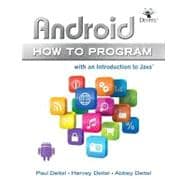
Paul J. Deitel, CEO and Chief Technical Officer of Deitel & Associates, Inc., is a graduate of the MIT Sloan School of Management, where he studied Information Technology. He holds the¿Java Certified Programmer and¿Java Certified Developer professional certifications, and has been designated by Sun Microsystems as a Java Champion—"a prominent member of the Java community whose input is solicited by the company in order to improve the Java platform." He has delivered programming language courses to clients including numerous Fortune 1000 companies, government organizations and the military. Paul is one of the world's most experienced corporate trainers. He has also lectured on C and Java for the Boston Chapter of the Association for Computing Machinery. The Deitels are the world's best-selling programming language textbook authors.
Dr. Harvey M. Deitel, Chairman and Chief Strategy Officer of Deitel & Associates, Inc., has 46 years of academic and industry experience in the¿computer field. Dr. Deitel earned B.S. and M.S. degrees from the Massachusetts Institute of¿Technology and a Ph.D. from Boston University. He has 20 years of college teaching experience, including earning tenure and serving as the Chairman of the¿Computer Science Department at Boston College before founding Deitel & Associates, Inc. He and Paul are the co-authors of several dozen books and multimedia packages. With translations published in many languages, the Deitels' texts have earned international recognition and are used in over 150 countries. Dr. Deitel has delivered hundreds of professional seminars to major corporations, academic institutions, government organizations and the military.
The New copy of this book will include any supplemental materials advertised. Please check the title of the book to determine if it should include any access cards, study guides, lab manuals, CDs, etc.
The Used, Rental and eBook copies of this book are not guaranteed to include any supplemental materials. Typically, only the book itself is included. This is true even if the title states it includes any access cards, study guides, lab manuals, CDs, etc.